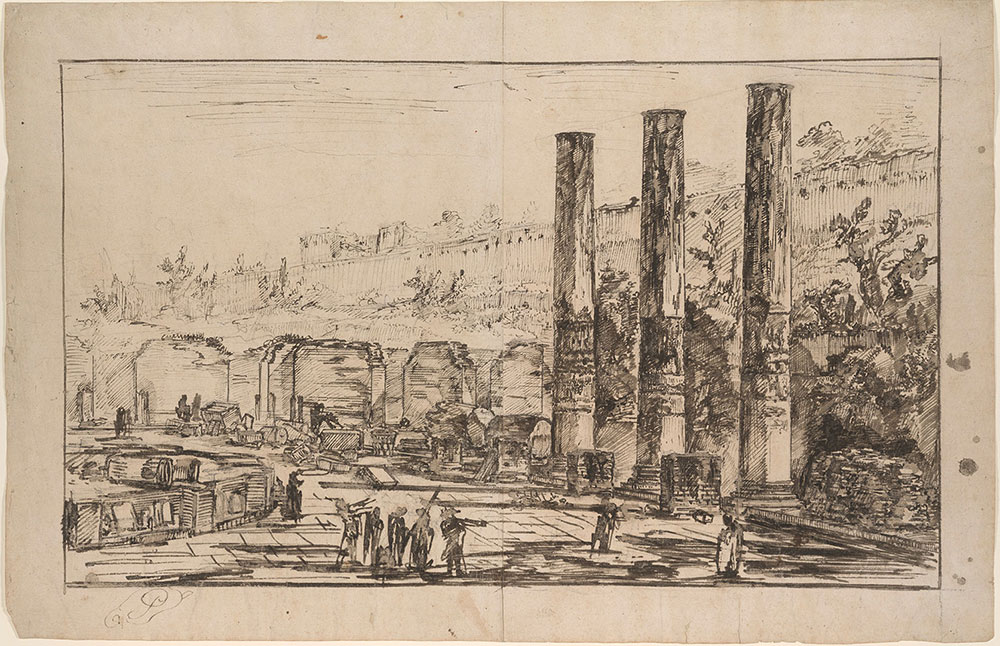
Giovanni Battista Piranesi
Ruins at Pozzuoli, ca. 1776–77
Pen and brown ink, over black chalk
The Morgan Library & Museum, Purchased as the Gift of the Fellows; 1961.1
John Marciari: While Piranesi’s pen drawings had become bolder and bolder over the years, there is little that truly prepares us for the dramatic drawings that he made during a trip to Southern Italy in the last year or two of his life. Over an initial sketch in black chalk, he then worked this drawing up with thick lines of ink, perhaps drawn with a reed pen rather than the traditional quill. We can recognize his typical figures in the foreground—a gesturing guide, a hatted Grand Tourist, and a heavily cloaked monk or beggar at right—but these figures have become abstractions. Perhaps this was just the natural evolution of Piranesi’s drawing manner. Alternately, the ailing artist, who had been in poor health for some years, might have realized that his assistants would ultimately translate these drawings into prints, and so adopted a schematic style to highlight the essential forms and necessary chiaroscuro.
While most of Piranesi’s drawings from his late trip to Southern Italy document Pompeii and Paestum, this sheet depicts the remains unearthed at Pozzuoli, the ancient town of Puteoli. There was much confusion about the site. It was believed to be a temple dedicated to Serapis, but it was actually the ancient marketplace. This confusion may explain Piranesi’s decision to show it as a jumble of ancient ruins, with the modern town beyond.
